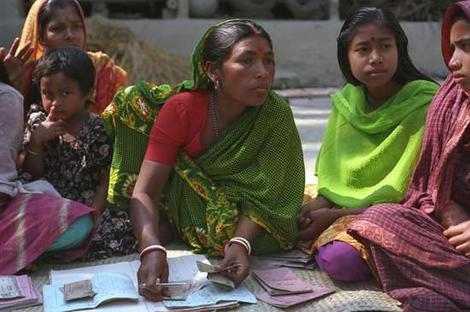The number of â€microborrowers†worldwide—people participating in the rapidly growing field of microfinance—increased by 17 percent in 2006, benefiting both communities and the environment, according to the latest Vital Signs Update released by the Worldwatch Institute.

“By helping individuals and villages replace firewood, oil, and kerosene with solar, wind, hydro, and biofuels, microfinance institutions help to improve the local environment while expanding access to electricity, boiled water, and refrigeration, dramatically improving the quality of life of the poor,†said Worldwatch Senior Researcher and Update author Gary Gardner.
Microfinance refers to financial services, including loans, savings accounts, and insurance products, that are designed to serve people with very low incomes. The 17 percent increase seen in 2006, the latest year for which data are available, continued a trend of double-digit growth that averaged some 29 percent annually between 2001 and 2006.
The global loan portfolio of the 340 microfinance institutions tracked by the Microfinance Information Exchange (MIX) also grew rapidly in 2006, increasing by 34 percent to $13.5 billion dollars. The average microloan size worldwide is now $1,026 and the average savings account balance is $1,126. Globally, the loan write-off ratio was 3.1 percent in 2006, lower than that of many commercial banks.
The sudden and significant success of microfinance is increasing pressure on many microfinance institutions to become more commercially oriented in their operations. Some analysts fear that this shift may cause microfinance institutions to raise interest rates or distribute profits to shareholders rather than reinvesting them in microfinance activities, hindering their original mission of poverty reduction. Proponents of private investment counter that commercializing microfinance is needed to attract the large sums of capital that will allow the practice to spread rapidly.
Regardless, the potential for expansion of microfinance remains significant. Today’s 133 million microborrowers represent only 5 percent of the people who lived on $2 or less per day in 2001. The Microcredit Summit Campaign, which helped spur the surge in microfinance with its goal of recruiting 100 million borrowers between 1997 and 2005, is now working to expand the number of microcredit recipients to 175 million by 2015.
Women are the most common benefactors of microfinance programs, accounting for 98 percent of borrowers in Asia and some two thirds of clients in Africa, Latin America, and the Middle East. As the birthplace of microfinance, Asia leads the world with 113 million borrowers, or roughly 85 percent of the global total. Latin America reported the fastest growth in borrowers in 2006, at 53 percent.
“Long ignored by mainstream financial institutions, microfinance is now a hot investment opportunity,” notes Gardner. “The poor have proven themselves to be a good investment bet. The challenge now lies in spreading and deepening that investment to bring widespread opportunity and prosperity to the world’s poor. “